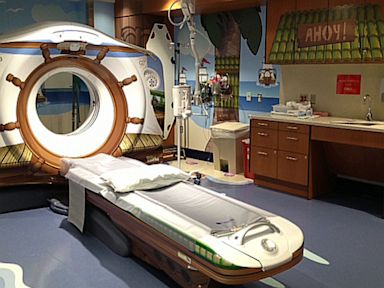 For the remarkable developments in medical technology, researchers and scientists still encounter a difficult problem once they examine the practices of the cute, but uncommunicative topics called human infants.
For the remarkable developments in medical technology, researchers and scientists still encounter a difficult problem once they examine the practices of the cute, but uncommunicative topics called human infants.
To be able to review babies without overwhelming them, researchers usually attempt to hide the huge devices required to see brain activity both by addressing it in child or by having the child sleeping through it -friendly arrangements. Other scientists have invented highly low tech methods for studying an infant’s curiosity about a topic, even if they can’t state just one word.
In the research released Monday within the Procedures of National Academy of Sciences, physicians employed a unique device because they begin to understand language skills to look at child brain activity.
A teacher of presentation and hearing sciences at the lead writer of the research as well as University of Washington, Patricia Kuhl, said the investigation suggested the region of the infants’ mind once they heard certain terms that controlled motor skills lit-up. The game suggested that speak earlier before they declare their first term and the babies want to imitate people.
Kuhl stated the research was significant due to the way as well as both astonishing results scientists could have them. They used the cutting-edge to “read” the infant’s brain activity system called a magnetoencephalograph, which was nimble enough to see the crazy world of infants’ brain activity and peaceful.
Kuhl said unlike an MRI equipment, which takes a patient to become completely nevertheless and is extremely noisy, the magnetoencephalograph is almost silent. Nevertheless the babies still needed to be secured into a seat, therefore, to keep them entertained the scientists were tasked with supporting games all-in the name of technology and making silly people.
“You want them to such as a laboratory,” said Kuhl. “It’s decorated with it’s and fish got little stickies [about it.] It’s… very child-friendly. We we’re really conscious and wave games and of the attention and of the need to play. We do anything to create them comfortable.”
In a 2013 research released in Psychological Research, scientists used MRI devices to look at baby’s brain activity in reaction to various stimuli. However, where they might not transfer to obtain the babies into the device, the scientists had the children get in once they fell asleep. Therefore, the noisy MRI equipment didn’t wake the babies, additionally they used head covers.
MRI machines could be so unpleasant for individuals due to claustrophobia or other worries about being within the clinic that the New York Hospital installed a sailing-crafted reader to place kids (plus some parents) more comfortable.
“The genius is in this machine. … There’s no noise and may transfer and the infant could hear,” said Kuhl of the magnetoencephalograph. “The capacity for your first-time to achieve this type of saving within this type of specialized advanced device… [it’s like] we’re placing [on] a stethoscope.”
Irrespective of technological developments, scientists, depend on some extremely low tech methods when studying children.



